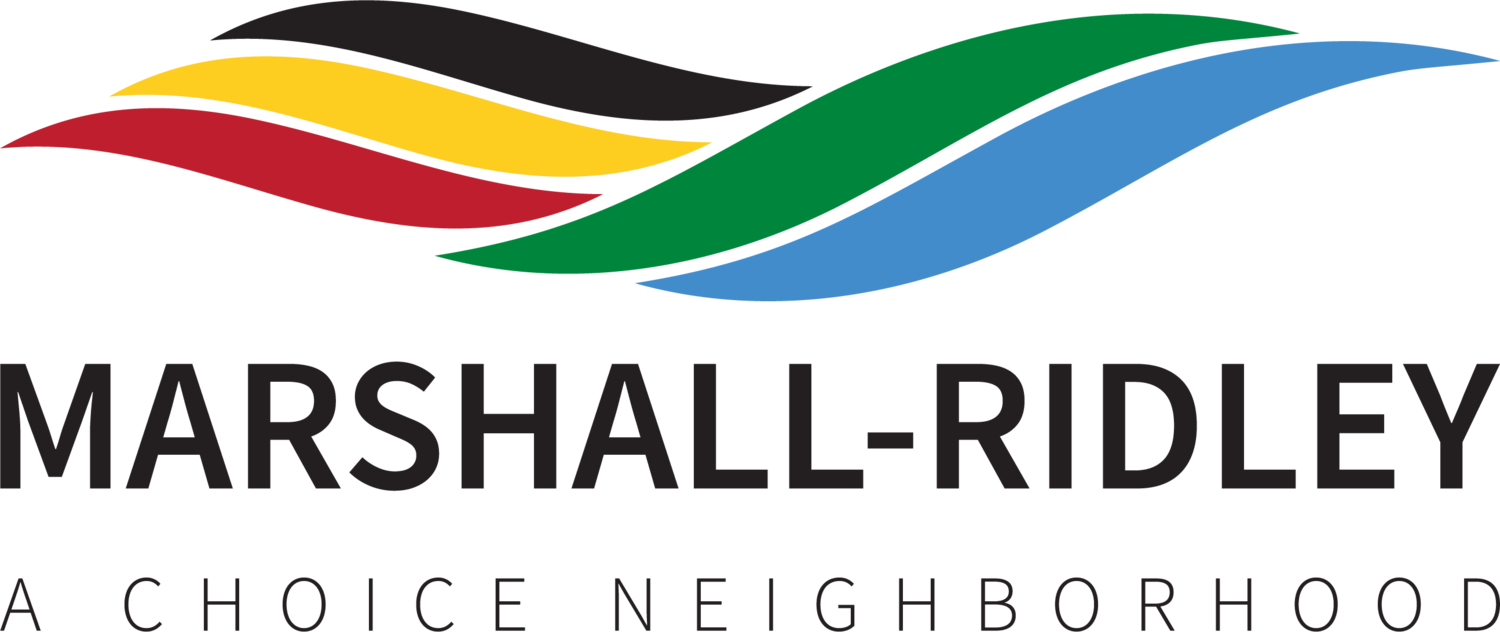Marshall-Ridley
The neighborhood planning area boundaries are 39th Street to the north, Hampton Roads Harbor to the south, I-664 to the west, and Marshall Avenue and the former Chase Bag property to the east.
Located in the Southeast Community, this neighborhood has a rich African-American heritage. Historically home to many black shipyard workers and administrators, it was once a thriving middle class residential area capitalizing on the shipbuilding and military economic boom in the first half of the 20th century.
NEIGHBORHOOD ASSETS
On-Going Investments
The Transformation Plan will build on assets within the target neighborhood and the rest of the Southeast Community. Housing assets include: NNRHA’s successful redevelopment of Marshall Courts (a previously distressed public housing site) and the recent development of 170 new affordable housing units – both within the target neighborhood. People assets include: the award-winning Achievable Dream magnet school and groundbreaking of the Magruder Discovery STEM Academy. Neighborhood assets include: completed revitalization of Phase I of Jefferson Avenue (including groundbreaking of Brooks Crossing mixed-use center which provides the neighborhood’s first grocery store in two years and a new Police South Precinct building); NNRHA’s 14 new Lofts at Jefferson units and the completion of over 120 units of affordable homeownership infill units in the larger neighborhood. The proposed plan will leverage $293,000 in cash commitments and $751,920 in supporting commitments from nine (9) planning partners and stakeholders with vested interest in genuine, sustainable neighborhood transformation.
Neighborhood Profile
Despite these existing assets and ongoing investments, the Marshall-Ridley neighborhood remains in decline and additional resources are critically needed to reverse the trend. This neighborhood exhibits some of the deepest needs in Newport News. The target neighborhood’s poverty rate is 51.54% compared to a citywide rate of 15.2%. A total of 78.9% of neighborhood residents are renters compared to 48.9% of citywide residents. The racial composition of the neighborhood is 94.1% African American compared to 40.7% at the city level. Unemployment in the neighborhood is at 21.1% compared to a city rate of 6.6%. Almost half (47.9%) of neighborhood households are led by single mothers compared to a citywide rate of 18.9%. Contributing to these dire metrics and much of the neighborhood’s distress is the fact that there is an inordinate concentration of public and assisted housing developments in this part of the city. More than half of the 2,000 households in this neighborhood are deeply subsidized, older housing units. Ridley Place, the target public housing site, is a 64-year old barrack-style severely distressed development for which rehab costs are almost 90% of Total Development Cost.
Source: US Census Bureau Most Recent Estimates 2016
Educational Attainment
Choice Neighborhood vs. City Wide
A Neighborhood of Opportunity
There is market and development potential in the neighborhood, illustrated by recent private investments, development inquiries and availability of large tracts of vacant land. The neighborhood has almost 100 acres of public and private aggregate land ripe for redevelopment with highway visibility and access, proximity to Downtown and the waterfront, and a stone’s throw from major job centers.


